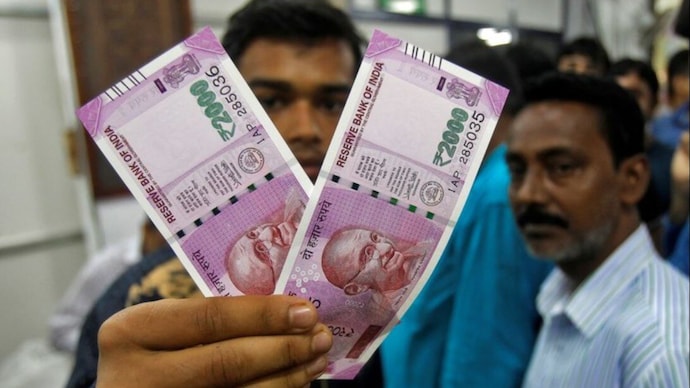Extended Deadline: RBI Grants Extra Time Until October 7 for ₹2,000 Note Returns and Exchanges

Extended Deadline: RBI Grants Extra Time Until October 7 for ₹2,000 Note Returns and Exchanges
In a significant development, the Reserve Bank of India (RBI) has magnanimously extended the deadline for returning or exchanging ₹2,000 notes with banks. Originally slated for September 30, this pivotal date has now been shifted to October 7, offering a more lenient window for citizens to comply with the central bank’s directive. This move comes in the wake of the RBI’s prior announcement, made in May, regarding the phased withdrawal of ₹2,000 banknotes, citing the imperative need to adhere to its clean-note policy.
The RBI’s Clean-Note Policy: A Brief Overview
To comprehend the magnitude of this recent deadline extension, it is imperative to delve into the rationale behind the RBI’s clean-note policy. This policy was introduced with the noble intention of enhancing the overall quality of currency in circulation. By progressively eliminating older and soiled notes from the financial ecosystem, the RBI aims to usher in a new era of cleaner and more durable currency. As part of this endeavor, the central bank decided to take the ₹2,000 notes out of circulation.
The Road to ₹2,000 Note Withdrawal
The journey towards withdrawing the ₹2,000 notes began in earnest in May, when the RBI issued a circular advising all banks to cease the issuance of these notes forthwith. This announcement marked the initial step in the RBI’s meticulous plan to phase out ₹2,000 notes. The central bank also reiterated its stance on the need for compliance with its clean-note policy, emphasizing the importance of replacing older, damaged, or soiled currency with newer and crisper notes.
The Impact on the General Public
With the original deadline of September 30 fast approaching, citizens across the nation were faced with the task of returning or exchanging their ₹2,000 notes in a limited timeframe. This posed a considerable challenge, as people scrambled to comply with the RBI’s directive amidst their daily routines and responsibilities. The extension of the deadline to October 7 now provides much-needed relief and a more realistic timeframe for individuals to complete this task.
Why the Deadline Extension Matters
The extension of the deadline carries profound implications for the Indian populace. It not only alleviates the time constraints previously imposed but also allows for a more organized and less stressful transition. Here are some key reasons why this extension matters:
1. Reduced Rush: The extended deadline diminishes the urgency for individuals to rush to their banks in a frantic bid to return or exchange their ₹2,000 notes. This reduction in the rush benefits both customers and bank staff, leading to smoother transactions.
2. Mitigating Disruptions: Given the widespread use of ₹2,000 notes in day-to-day transactions, a sudden and hasty withdrawal could have disrupted economic activities. The extension mitigates this risk by providing a more gradual phasing out of these notes.
3. Ensuring Inclusivity: It takes into account the diverse needs and schedules of citizens, ensuring that everyone has a reasonable opportunity to comply with the RBI’s directive, regardless of their individual circumstances.
4. Boosting Financial Literacy: The extended deadline also serves as a reminder of the importance of financial literacy. It encourages individuals to stay informed about currency policies and banking regulations, promoting a more financially aware society.
5. Promoting Smooth Implementation: For banks and financial institutions, the extended deadline allows for a more methodical and seamless implementation of the RBI’s clean-note policy. This can help in the efficient management of currency supply and circulation.
How to Exchange or Return ₹2,000 Notes
To make the process as straightforward as possible, here’s a quick guide on how to exchange or return ₹2,000 notes within the extended timeframe:
1. Visit Your Bank: Locate your nearest bank branch or ATM that provides currency exchange services. Most banks have designated counters for this purpose.
2. Carry Identification: Ensure you carry a valid government-issued ID, such as Aadhar card, PAN card, or passport, as it may be required for the exchange or return process.
3. Fill Out Necessary Forms: At the bank, you may be required to fill out a currency exchange or return form. Bank officials will guide you through the process.
4. Verify Your Currency: Ensure that the ₹2,000 notes you are exchanging or returning are genuine and in good condition. Banks may not accept torn, defaced, or counterfeit notes.
5. Receive Confirmation: After completing the necessary formalities, the bank will provide you with a receipt or confirmation of the transaction.
6. Keep Records: It’s advisable to retain records of the transactions, including receipts and any communication with bank officials, for your own reference.

The extension of the deadline by the Reserve Bank of India is a reflection of the central bank’s responsiveness to the needs and concerns of the general public. It acknowledges that the withdrawal of ₹2,000 notes is a significant shift in the currency landscape, and granting additional time allows for a more orderly adjustment. This also aligns with the government’s efforts to promote digital payments and reduce cash transactions, as individuals have more time to adapt to alternative modes of payment.
Moreover, the extended deadline serves as a reminder of the RBI’s commitment to financial inclusion. It ensures that even those in remote or underserved areas have an equitable chance to comply with the clean-note policy. Banks in rural areas, where access to banking services may be limited, can now accommodate customers without the undue pressure of an impending deadline.
While this extension offers a reprieve, it’s essential for citizens to seize this opportunity responsibly. It’s an ideal time to review one’s financial practices, check for any hidden caches of ₹2,000 notes, and take steps to exchange or return them. Additionally, individuals should consider adopting digital payment methods, which are not only convenient but also align with the nation’s push toward a cashless economy.
Conclusion
In extending the deadline for returning or exchanging ₹2,000 notes to October 7, the Reserve Bank of India has shown a commendable commitment to easing the transition for citizens and ensuring the successful implementation of its clean-note policy. This move not only provides individuals with a more reasonable timeframe but also underscores the importance of financial literacy and responsible currency management.
As the nation adapts to this change, it is imperative for all stakeholders – individuals, banks, and policymakers – to collaborate in a spirit of cooperation to ensure a smooth and seamless transition towards a cleaner, more efficient currency ecosystem. The extension of the deadline represents a golden opportunity for citizens to actively participate in this process, contributing to a stronger and more resilient financial future for India.






